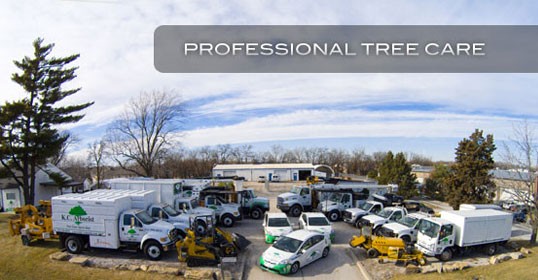Understanding the Importance of Tree Preservation and Preservation Practices in Urban Areas
In the busy landscape of metropolitan settings, trees usually stand as quiet guardians, giving a plethora of benefits that extend far past their visual allure. Understanding the importance of tree conservation and preservation methods in these locations is not simply an alternative method but an environmental consideration to fostering lasting and resistant communities. As we explore the intertwined fabric of ecological, social, and economic benefits that metropolitan trees offer, it becomes evident that their conservation is critical for the health of future and present generations. Let us start a trip to discover the vital function that trees play in shaping the metropolitan landscapes of tomorrow.
Ecological Benefits of Trees in Cities
Trees in metropolitan locations play an essential duty in supplying various ecological benefits, contributing to the general wellness of city slicker. One substantial benefit is the renovation of air quality. Trees act as natural filters, soaking up pollutants such as carbon monoxide gas, sulfur dioxide, and nitrogen dioxide, and launching oxygen right into the atmosphere. This process helps in reducing the focus of harmful gases, making the air cleaner and healthier for homeowners.

In addition, trees contribute to water monitoring by decreasing stormwater runoff and soil erosion. On the whole, the ecological benefits of trees in cities are essential for creating comfortable and sustainable metropolitan environments.
Social Importance of Urban Tree Conservation
In contemporary metropolitan landscapes, the preservation of trees holds considerable social importance for promoting neighborhood wellness and boosting quality of life. Urban tree preservation plays an essential duty in developing areas for social communication and area involvement. Trees give meeting place for individuals, such as parks and environment-friendly areas, where neighborhoods can collaborate for leisure activities, get-togethers, and leisurely walks. The presence of trees in metropolitan settings has actually been connected to minimized degrees of stress and anxiety, boosted mental wellness, and boosted feelings of wellness amongst residents. Furthermore, trees add to the aesthetic appeals of communities, producing aesthetically enticing surroundings that improve the general livability of metropolitan areas.

Economic Value of Tree Preservation
The conservation and preservation of city trees provide considerable economic benefits that add to the general financial health of cities and areas. Urban trees supply a vast array of financial benefits that favorably affect regional economic climates. One substantial economic advantage of tree preservation is the boost in home worths. Trees boost the aesthetic allure of neighborhoods, resulting in higher building values and attracting possible customers or tenants. Urban trees aid lower energy expenses by giving color in the summer and acting as windbreaks in the winter, consequently lowering the need for heating and cooling down systems.
Additionally, trees play a critical role in lowering stormwater runoff and minimizing the impacts of flooding, which can lead here to price savings for cities in terms of infrastructure repair and maintenance. Urban trees also add to boosted other air top quality by releasing and absorbing contaminants oxygen, leading to potential financial savings in healthcare prices connected with respiratory system diseases. By investing and identifying in the financial worth of tree conservation, cities can advertise sustainable advancement, enhance top quality of life, and create more resilient metropolitan environments.
Techniques for Lasting Urban Tree Administration
A comprehensive strategy to sustainable metropolitan tree management involves incorporating diverse methods that focus on long-lasting ecological health and wellness and neighborhood well-being. Applying tree inventories and evaluations is vital to understand urban tree populaces, their health, and upkeep requirements.
Community engagement plays a critical duty in lasting city tree administration. Educating homeowners concerning the benefits of trees, organizing tree planting occasions, and entailing volunteers in tree treatment tasks fosters a sense of ownership and stewardship. Partnership between regional federal government, ecological companies, and residents is key to developing and implementing efficient tree management plans.
Buying environment-friendly facilities, such as metropolitan woodlands and green roofing systems, can offer several advantages, consisting of enhanced air quality, stormwater management, and urban warmth island reduction. RC Property Services Guilford CT. Integrating trees into urban preparation and style procedures makes sure that trees are valued as vital parts of a resilient and healthy and balanced city setting
Community Involvement in Tree Conservation
Community involvement is a basic component in promoting sustainable city tree administration techniques and making sure the long-term health and preservation of city tree populations. Engaging the area in tree conservation initiatives can result in increased understanding, recognition, and stewardship of trees within urban locations. When residents actively participate in tree conservation, planting, and maintenance initiatives, they develop a sense of possession and pride in their local environment.
Area involvement also promotes social cohesion and partnership among residents, local authorities, and environmental companies, fostering a common duty for metropolitan tree preservation. By organizing tree growing occasions, educational workshops, and volunteer opportunities, areas can interact to investigate this site improve the city tree canopy and create greener, much healthier cities. Moreover, entailing homeowners in decision-making procedures pertaining to tree monitoring makes certain that varied viewpoints and neighborhood expertise are thought about, resulting in much more effective and sustainable conservation methods. Tree service guilford ct. Eventually, community involvement plays a critical duty in structure resilient and successful urban woodlands for future generations to delight in.
Final Thought
Finally, urban tree preservation and preservation practices play an essential role in improving the ecological, social, and financial health of cities. By identifying the worth of trees in urban areas and executing sustainable monitoring strategies, neighborhoods can take pleasure in the numerous advantages that trees supply. It is critical for stakeholders to actively participate in tree preservation efforts to make certain a greener and healthier urban environment for future and current generations.
